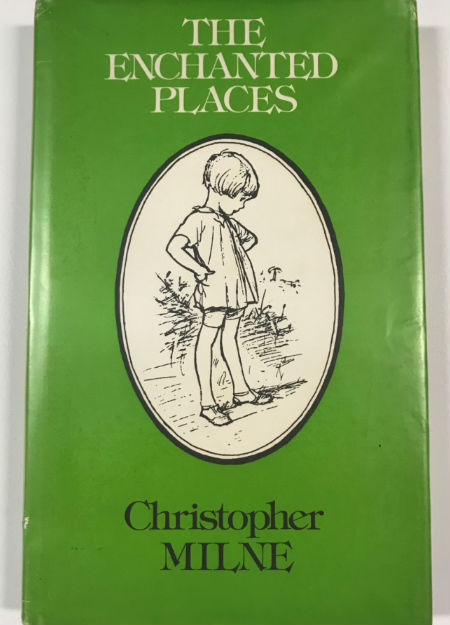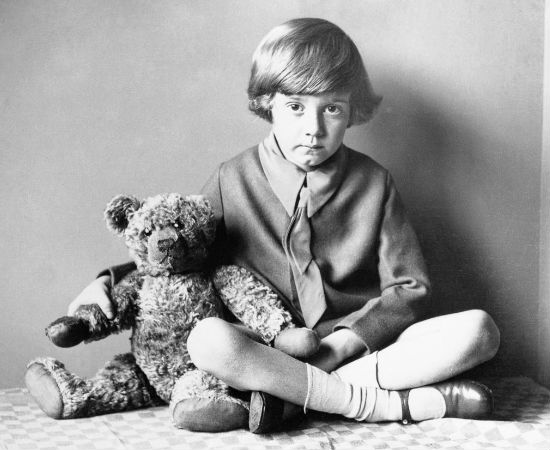
When you think about characters as beloved as Christopher Robin, Winnie the Pooh, Piglet, Tigger and Eeyore and the rest of the residents of the Hundred-Acre Wood, it’s easy to assume that everything to do with them must be equally as bucolic and paradisaical as they are.
After all, in the four books by A. A. Milne, they inhabit a world where love and acceptance reign, where mistakes can be made and recovered from, where problems arise but find a solution somewhere down the road, perhaps after a smackerel of honey.
It is, by any estimation, an idealised world, but in Christopher Milne’s account of what it was like to be Christopher Robin when Winnie the Pooh’s popularity went almost immediately ballistic in the 1920s – the books were published before 1924 and 1928 when Milne junior was four to eight years old – you come to realise that life removed from A. A. Milne’s imagination was not as perfect as it was in the books.
“There are two sorts of writer. There is the writer who is basically a reporter and there is the creative writer. The one draws on his experiences, the other on his dreams. My father was a creative writer and so it was precisely because he was not able to play with his small son that his longings sought and found satisfaction in another direction. He wrote about him instead.” (P. 36)
It wasn’t horrible either, but as Milne explains, the success of the books brought both unrelenting attention on a young boy who was happily content to spend his days exploring the Milne home in Sussex, Cotchford Farm, and a sense of being defined by the character of Christopher Robin, whom Milne admits, was partly him and partly his father’s distillation of the perfect son.
A son, it must be noted, with whom he was not overly familiar thanks to Christopher Robin’s nanny effectively assuming parenting duties during his childhood; it was only at age 9, when he went off to first day school then boarding school that father and son really got to know each other.
When they did, they got on extremely well, although as Milne admits, his father, a noted playwright and writer of short stories whose career came to be defined almost solely by Winnie the Pooh, this only really lasted until the time Christopher Robin turned 18, at which point he began to diverge away from his father once again.
To hear Milne tell it, and he writes in an easy, light and disarmingly honest way, the father-son dynamic came to be defined by Christopher Robin, in ways big and small with Milne the younger going from quite liking the attention he received as a child to wanting to distance himself from his fictional namesake as he grew into adulthood.

Not so different to most people, but then very few of us have had to grapple with fame at a age when we barely even know what it is; indeed as Milne admits, like any child, his world began and ended with his family and his home, and imagining anything beyond that such as Pooh’s stratospheric fame, was simply beyond anything he could conceive. (He was in many years one of the first modern child stars, a concept that has become commonplace today but which was in the 1920s, a relatively new development.)
Granted he was interviewed from time to time with some experiences being positive, others not so much – one was so bad, with his words twisted out of all recognition by a reporter, that it poisoned him against giving any kind of fuel to the Pooh bonfire of fame from that point on – but that was usually the extent of it, with his father the one left to grapple with a writing career overshadowed by one small part of it.
Christopher Milne does note though that he was, by and large, happy with his relationship with the fictional Christopher Robin save for a period in his late twenties when he was unable to find employment and came to resent the way his life remained tied to his childhood in a way most adults don’t experience. (His father, as noted, went through something similar, unable to escape Pooh’s considerable shadow.)
“My father’s heart remained buttoned up all through his life, and I wouldn’t want now to attempt to unbutton it, to write about things he never spoke about. All I hope to do is to catch some of the overflow that came bubbling out and get it on to the page before it runs to waste. No more than that.” (P. 103)
The Enchanted Places is a delightful read, giving us alternately a recounting of how the various toys he was given as a child came to be come the characters in his father’s wildly-popular books, and what life was life for a child in the 1920s and 1930s, in the fallow period between the two great wars that came to define he and father’s lives.
There is a whimsy and fun to some chapters as a result but always, always, a clear demarcation between what we think life was like for him as Christopher Milne and Christopher Robin – he publishes a letter from one young fan who can’t imagine why you wouldn’t love every moment of being the inspiration for Pooh’s companion, demonstrating the divergence between fandom’s perception and reality – and a firm countering of any idea that life as Milne’s son, of the fame that came with it, must have been nothing but sunshine and roses.
Again, Milne is careful not to paint his life as something he had to endure, happily acknowledging that much of his life was as wonderful as you might imagine it to be.
But he was not, and could never be, Christopher Robin since he existed solely in his father’s imagination and then in the books we all love so much, and expecting the real Christopher Robin to be that person was simply never going to deliver anything but disappointment.
As pulling back of the curtains go, it’s hardly revelatory – even at his most honest, Milne is rarely nasty or bitter and always balanced – but The Enchanted Places provides a fascinating look at what it was like to grow up with Christopher Robin as your constant companion, an insight that could well prove quite illuminating when Goodbye Christopher Robin opens later this year.